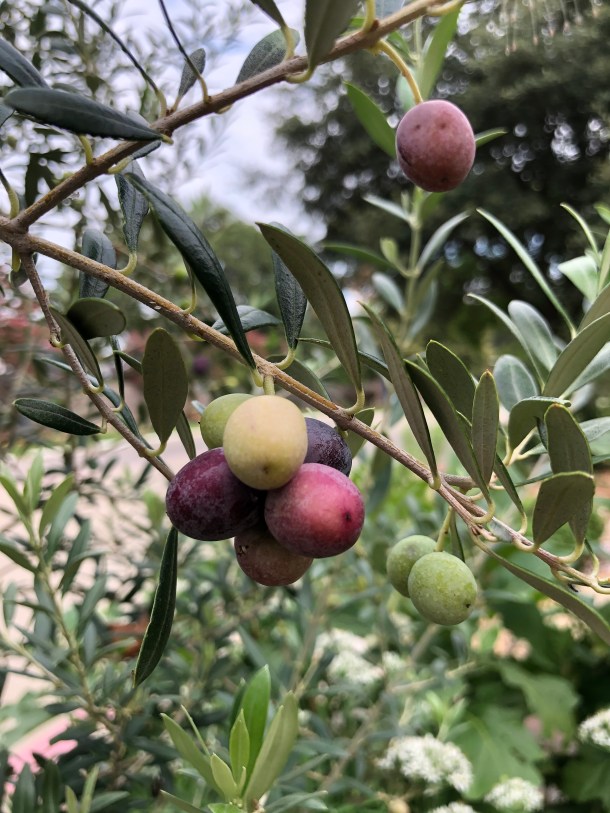
Olive tree surrounded by garlic chives.
It was just over one year ago that a quick trip to a local garden center had surprising results. After visiting with the owner for a few minutes, I was convinced that nothing would be statelier in front of our greenhouse than a five-foot-tall arbequina olive tree. Ruth, the owner, was already growing olive trees at her house just minutes away. She assured me that all twelve trees had been thriving in her garden for over eight years.
An on-the-spot decision was made, and Ruth helped me select a nicely shaped olive tree that just fit into my vehicle. Back at the garden, one of our strong and capable male volunteers dug the hole and lifted our arbequina olive tree in place. Carefully staked and secured with rubber tubing, our tree was ready for late fall and winter weather in its new sunny location.
We were so pleased to watch as it continued to grow through a mild winter and into spring. But the real thrill for us happened this summer when the tiny little green olives started popping out on some of the lower branches.

Ripening olives
Now, at the end of September, it is exciting to see the olive harvest multiplying. As we arrive at the garden each Tuesday to tend to our chores, we’ve noticed that the olives are slowly transitioning from green to rose and then a deep, dark purple. By mid-November the olives should have ripened enough to be harvested and ready for the next step.
After searching through various internet sources, we’ve decided to experiment with two different methods for enjoying our olives.
#1 – Curing and Brining (Water Method)
#2 – Curing and Brining (Salt Method)
If you’re interested in growing an olive tree in your garden, here are some helpful facts that we learned about the Arbequina variety:
*It is one of the most extensively planted olive cultivars in the world (USDA hardiness zones 7 through 11).
*The name comes from the village of Arbeca (Spain) where it was first introduced to Europe from the Ottoman Empire in the seventeenth century.
*Arbequina olive trees are hardier than other varieties and are resistant to drought and pests.
*Arbequina olive trees prefer four to eight hours of full to partial sunlight. They are adaptable to different conditions of climate and soil but do best in alkaline soils.
*Arbequina’s are often described as a small olive that packs big flavor. They have a rich and flavorful fruity, buttery taste with a texture that is meaty and firm.
Linda Alexander
Click here to read about brining olives.




















